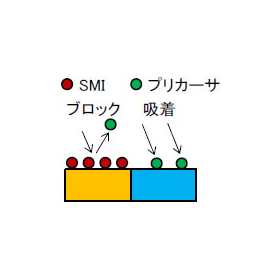[NMR] Nuclear Magnetic Resonance Analysis
Nuclear Magnetic Resonance
NMR is a technique used to estimate the structure of compounds by observing the phenomenon (resonance phenomenon) in which atomic nuclei absorb specific electromagnetic waves corresponding to their respective chemical environments when exposed to electromagnetic waves in a magnetic field. The main constituent elements of organic compounds, such as hydrogen and carbon, allow for structural analysis and quantitative analysis of organic compounds through the measurement of 1H and 13C NMR spectra, based on their chemical shifts and integral intensities. Additionally, by analyzing the splitting patterns of the spectra, it is also possible to estimate the spatial relationships between the atomic nuclei. In inorganic compounds, insights regarding their structures can be obtained by measuring nuclei other than 1H and 13C, known as multinuclear nuclei (for example, 19F, 29Si, 31P, etc.). NMR includes solution NMR, used for samples soluble in solvents, and solid-state NMR, used for samples that are insoluble or poorly soluble in solvents.
basic information
For more details, please contact us.
Price range
Delivery Time
Applications/Examples of results
- Structural analysis of organic materials - Identification and quantitative analysis of additives and impurities in organic materials - Molecular structure analysis and degradation analysis of organic thin films - Structural analysis and diffusion evaluation of battery materials - Purity measurement of standard substances
Recommended products
Distributors
MST is a foundation that provides contract analysis services. We possess various analytical instruments such as TEM, SIMS, and XRD to meet your analysis needs. Our knowledgeable sales representatives will propose appropriate analysis plans. We are also available for consultations at your company, of course. We have obtained ISO 9001 and ISO 27001 certifications. Please feel free to consult us for product development, identifying causes of defects, and patent investigations! MST will guide you to solutions for your "troubles"!

















































